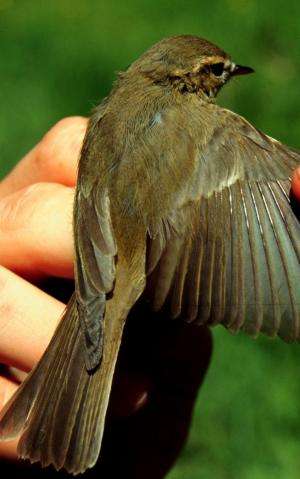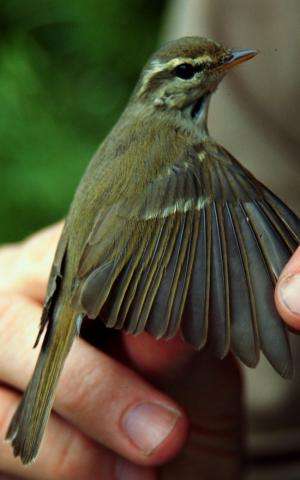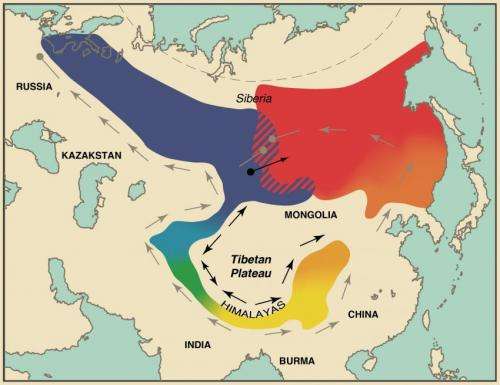Researchers map the epic evolution of a 'ring species'

The Greenish Warbler, long considered an idealized example of a single species that diverged into two as it expanded its range, has a much more checkered family history than biologists previously realized.
Ring species are a continuous loop of related populations, each adapted to its local environment, with two terminal populations in the loop meeting but now unable to mate. But an in-depth genomic analysis published today in Nature by University of British Columbia researchers reveals that the Greenish Warbler's genetic migration through central Asia involved periods of geographic separation and hybridization.
"We've shown that the evolution of ring species is much more complex than the smooth and continuous divergence envisioned by the classic model," says UBC zoologist Miguel Alcaide, the paper's lead author.
"If you view the ring of Greenish Warbler subspecies as a river, over the years the flow of populations has experienced periods of isolation—as if forming ponds during a draught—which accelerated genetic differences. This would have been interspersed with periods of flooding, or rapid exchange between populations. Interbreeding after range expansion has been, however, much more restricted among neighboring populations exhibiting substantial differences in morphology and behavior."

Originally expanding out of southern Asia, subspecies of greenish warbler have diverged around the expanse of the Tibetan plateau over thousands of years, with two distantly related populations meeting again in the north, in central Siberia. Since early observations in the 1930s, biologists have thought the terminal sub-species incapable of mating. The new analysis shows that small regions of the western Siberian genome can be found in some of the eastern Siberian birds, indicating some successful hybridization between those forms.
"Given the new genomic evidence for historical breaks in gene flow, it's remarkable that traits such as plumage and song show such gradual change around the ring," says UBC researcher Darren Irwin, senior author on the paper and an expert who has studied greenish warblers since the 1990s.
"And despite the small amount of hybridization between the most distantly related forms in central Siberia, they remain highly distinct in songs, plumage and genomic patterns."

"Overall, despite the complex patterns of gene flow, the Greenish Warbler still has the central characteristics of a ring species: two mostly distinct populations connected by a chain of populations in which traits and genes change progressively from one species to the other," says Irwin.
More information: Paper: Genomic divergence in a ring species complex, DOI: 10.1038/nature13285
Journal information: Nature
Provided by University of British Columbia


















